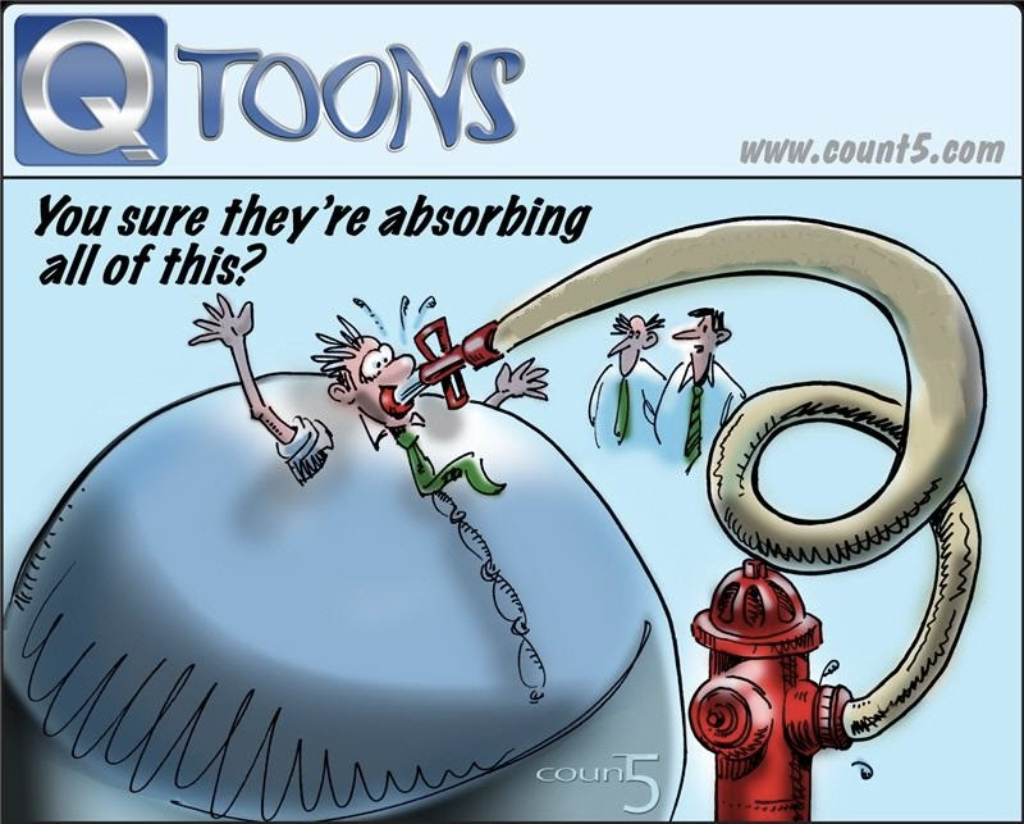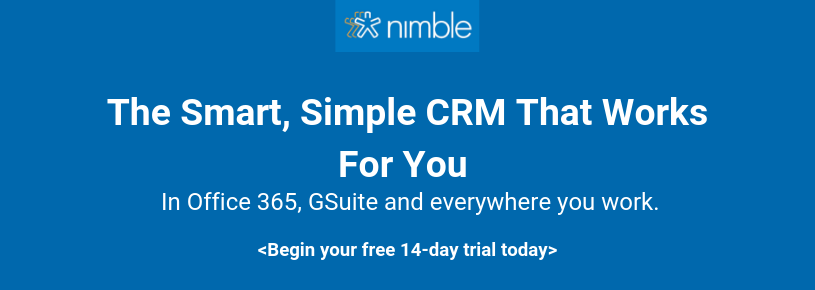Before the internet, many sellers labored on an erroneous assumption that “the customer is always right.” Professional salespeople knew this was not so, but the also-rans bought into the myth to their detriment. The internet brought new myths and slogans to exploit, a crowd favorite being “Information Parity.”
The theory is that before the internet, we operated in a “world where there is information asymmetry. The seller always knew more, and the buyers had few choices and had little voice. The world of buyer beware. However, this asymmetry is being shifted. Much more power is now in the hands of the buyer. We are close to information parity.”
This idea may have briefly held up in the closing months of the last millennium, but much beyond that.
Yet many pundits still operate as though information parity exists. This perhaps explains the dreadful results B2B sales teams are delivering, COVID or no. “Sixty Percent of Forecasted Deals Do Not Close.” Nearly half of the reps do not attain quota and win rates are down.
Clearly, something isn’t right. Salespeople can be less passive and do a better job selling. There is an argument to be made that buyers could do a better job buying. Something salespeople could do, but the pundits keep getting in the way.
Who Really Knows?
Pundits falsely tell unsuspecting salespeople that buyers are informed; more informed than the seller, warning them “seller beware.” Yeah, right?
Sure, buyers have more access to information than ever, but are they accessing? Are they leveraging it to make more informed decisions, are they any smarter for it? I think you can guess my answer.
Information is not knowledge. Knowledge is not wisdom. Wisdom is not insight. Value is usually derived from actionable insights. Take all the information you need; but in and of itself, the information does not lead to action. Yes, prospects have access to all the information they want… but are they accessing any of it?
Those who try report that they are overwhelmed, like drinking from a firehose. Yet sellers, marketers, and content jockeys around the world continue to dole out information/content as though there was a shortage.
Empowerment
Pundits have been hurting sales and salespeople by propagating a false reality of buyers who are informed and empowered.
According to the Challenger guys at Gartner, “with a wealth of data on any solution, a raft of stakeholders involved in each purchase, and an ever-expanding array of options, more and more deals bog down or even halt altogether. Customers are increasingly overwhelmed and often more paralyzed than empowered.” (HBR April 2017)
Add this to the fact that many buyers are suspicious of the information they receive from vendors, both in terms of trust or adding value to their decision making. No doubt there is a lot of information available to buyers, but it is having the wrong impact.

Is it any surprise that buyers take much longer to make a purchase decision than in the past, and that more forecasted deals are ending in no decision?
Selling Is Educating
When I suggest this to salespeople, they start thinking about how to teach their prospects why this is the best solution. This is a waste of time. The opportunity is to teach your buyers how to buy, evaluate, decide, and execute.
All this adds up to a great opportunity for enterprising salespeople willing to make the effort to educate their buyers. Many will remember the famous ad by the clothing chain store SYMS. “An educated consumer is our best customer.” This is a fact in every purchase and an opportunity to change the perceptions buyers have.
Notice the focus here is on educating the customer, not informing them. Most customers place low value on information delivered by vendors, this is confirmed in “2020 B2B Buying Disconnect Report: Buying Software In The New Decade”, by TrustRadious. This starts with us educating ourselves and our salespeople to help them educate our buyers.
Be the Play
In any given conversation with a prospect, your value is not based on your product, but your expertise. While they may be active in the business every day, they are active in just that business. You on the other hand deal with dozens of their peers and competitors.
Assuming you are doing your job, you are a conduit to best practices, and some bad ones too. It is not a question of being smarter, but of exposure. I speak to more VP’s of Sales in a month than many VP’s themselves would in a year. According to TrustRadious, that is what prospects value — a peek beyond their walls.
Add to that the fact that the people involved in the purchase decision may go through that process once every few years. We live it every day, thinking about it in different ways based on who we are engaged with.
Your customers are attentive and will begin to ask questions about the flow, not the product. People instinctively seek the security of expertise, educating them just validates that in their mind.
What You Should Learn
The first is to learn how and why buyers buy. Salespeople think they know, but the data suggests buyers don’t. One study showed that reps had no better idea of why they won a given deal versus why they lost one. This indicates that rather than leading the process, they were just along for a ride.
Nearly half of decision-makers never deal with a rep directly, and even when they do, they consult over 5 different sources in the process. This clearly shows a need for a new role for your revenue generators. Approaching the sales as an SME Educator forces us to change our outlook and resulting approach. Once you are not a seller, you can leave your product in the car and strive for a different experience with buyers.
Subject matter experts, like the best educators, help people understand so they can make the right decision. Sellers want the buyer to make decisions favorable to them first, and if it is right for the buyer, bonus.
My greatest value to my buyers is that I am a conduit to best practices; not my best practices, but those of all my clients. When I share how others are navigating the same waters, it has more value than any product or ROI story.
Where to Begin
Start by changing your sales process to a “decision process.” You want that decision to be your product, but they can’t do that if they don’t know how to decide.
Take a look at your tools. Are you geared up to wrestle the prospect into a sale, or are you equipped to educate? There are two elements to that: first, how do you stay aware and more importantly, how do you share. Staying aware means not only monitoring the market trends but the experience of those who have bought from you.
If what you share is to have value, you need to be well-armed. This is where a thorough deal review process comes in. Not the pedestrian, “gee how do you like us so far?” review. Rather than asking the buyer how they like your product as soon as it’s implemented, wait a little bit. Go back six months later and understand how their workflow has changed, the impact of that change on the company, the work-flow, and the individual you are speaking with.
You then need to consider which information you deliver, how, and when. Most sales tools are driven to drive transactions, not dialogue.
They ignore the “consideration” phase of the buying process.
Usually, because their tools are geared to sell, not to decide. Decision-makers evaluate the impact on the business, not how your product is being used — especially when they are not using it.
Tools that are geared to engagement, dialogue, and decision are much more effective. If I engage and educate while they are considering their options, there is a much greater likelihood they will turn to me once they have picked their path.
This is when you want to introduce a product, not before. You want a tool that helps you engage people while they are still thinking about things, not after they have and are down to eliminating vendors. You want to be there in time to help them to learn how to buy, not once they put that learning into practice.


